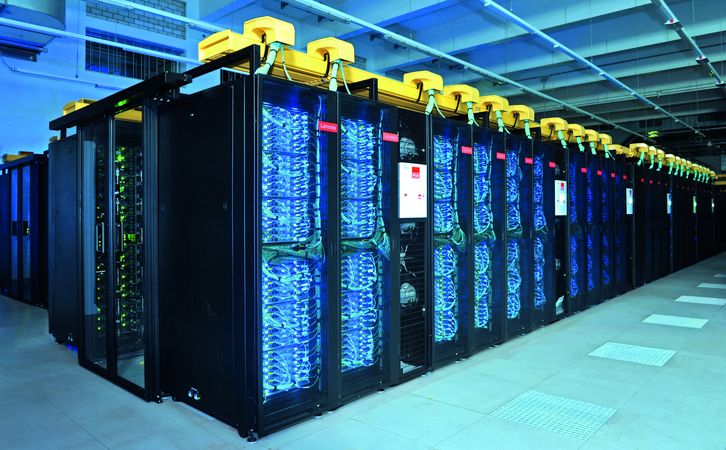PRESS RELEASES
SuperMUC-NG Leads the Way in GCS’ Return to Top500 Prominence
Press Release 07/2018 –
BERLIN, Germany, Nov. 14, 2018—In the latest Top500 list, announced on Monday, Nov. 12, 2018 at the Supercomputing Conference 2018 (SC18) in Dallas, Texas, the Leibniz Supercomputing Centre’s (LRZ’s) newest supercomputer, SuperMUC-NG, brought GCS back into the biannual list’s top 10 for the first time since June, 2016. The machine, which registered 19.46 petaflops—just over 19 quadrillion calculations per second—in the Linpack benchmark, ranks number 8 among the fastest supercomputers in the world.
SuperMUC-NG is in its start-up phase, and will be ready for full production runs in 2019. The machine, built in partnership with Lenovo and Intel, has a theoretical peak of 26.9 petaflops, and is comprised of 6,400 compute nodes based on Intel Xeon Scalable processors. SuperMUC-NG also uses warm-water cooling to ensure that LRZ, long a thought-leader in sustainable supercomputing, minimizes the machine’s carbon footprint.
SuperMUC-NG represents the largest GCS installation since receiving funding for a second decade as Germany’s premiere supercomputing organization. GCS is the alliance of LRZ, the High-Performance Computing Center Stuttgart (HLRS), and the Jülich Supercomputing Centre (JSC).
In September, JSC inaugurated the first phase of its next-generation HPC system, JUWELS, which is also among the fastest supercomputers in the world, clocking in at 12 petaflops. The machine, a partnership between Atos and ParTec, will receive its next booster module in the next year and a half that will be capable of at least 50 petaflops.
HLRS announced this week that it had reached an agreement with Hewlett Packard Enterprise and AMD to build its next-generation supercomputer, Hawk, scheduled to be installed and ready for production in late 2019. The machine will have a theoretical peak performance of 24 petaflops. Combined, the three GCS centres provide the largest supercomputing infrastructure in Europe, with a combined 35 petaflops in 2018, 50–60 petaflops in 2019, and at least 80–100 petaflops in 2020.
About GCS: The Gauss Centre for Supercomputing (GCS) combines the three German national supercomputing centres HLRS (High Performance Computing Center Stuttgart), JSC (Jülich Supercomputing Centre), and LRZ (Leibniz Supercomputing Centre, Garching near Munich) into Germany’s integrated Tier-0 supercomputing institution. Together, the three centres provide the largest, most powerful supercomputing infrastructure in all of Europe to serve a wide range of academic and industrial research activities in various disciplines. They also provide top-tier training and education for the national as well as the European High Performance Computing (HPC) community. GCS is the German member of PRACE (Partnership for Advanced Computing in Europe), an international non-profit association consisting of 24 member countries, whose representative organizations create a pan-European supercomputing infrastructure, providing access to computing and data management resources and services for large-scale scientific and engineering applications at the highest performance level.
GCS is jointly funded by the German Federal Ministry of Education and Research and the federal states of Baden-Württemberg, Bavaria, and North Rhine-Westphalia. It is headquartered in Berlin, Germany. For more information, please visit www.gauss-centre.eu.
Contact:
Eric Gedenk, GCS Public Relations
+49 711 685-87241
e.gedenk@gauss-centre.eu
This press release as a pdf.
